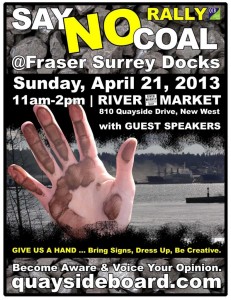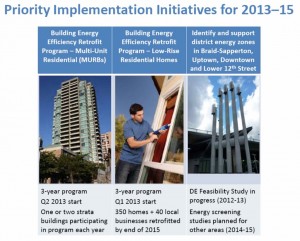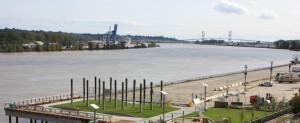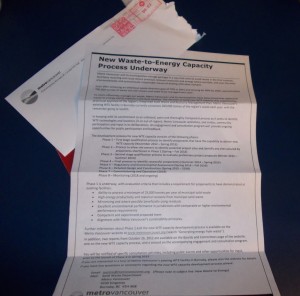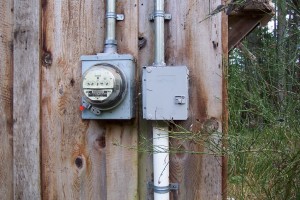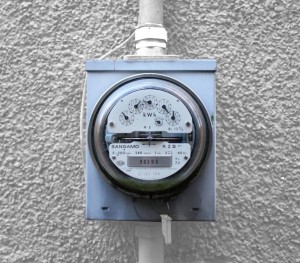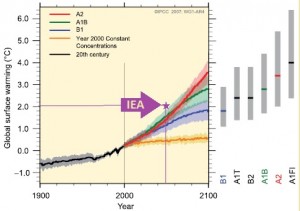By now, the front page of the newspaper has moved away from Lac-Mégantic to more recent tragedies and travesties, while the body count in Quebec is still incomplete and the memorials have just begun. Cities like New Westminster that are wrapped around rail yards are taking the opportunity to do a little inward reflection – are we under similar risk? What’s in those tankers over there? What can we do about it? Meanwhile, remaining discussions of the original incident are circling around whom to blame- and who should pay.
Everyone is trying to score “political points”, mostly by accusing others of trying to score “political points”. The media treated us to the strange spectacle of an unprepared Corporate Boss ham-fistedly talking to people who recently had their City and/or families destroyed- then the media somehow concentrated on his poor management of a PR opportunity and not on his poor management of a Train Company that just killed 50 people… alas.
Mistakes were made.
People (including me) who have found themselves questioning for several years what our country slowly evolving into a Petro-State really means find we have to censor ourselves at times like these. Yeah, it may be hard to directly link the Calgary Floods and the Toronto Storm and the fact most of the western United States is currently on fire directly to fossil fuel burning and profiteering, and if I were to suggest a link, I am the one trying to capture “political points” (whatever the hell those are) from others’ tragedies.
One thing is certain about Lac-Mégantic: this is what Peak Oil looks like. Much like the Deepwater Horizon disaster and our Federal Government’s decision to approve Shell’s new Bitumen Sand megaproject while acknowledging it will violate the Species at Risk Act, the Migratory Birds Convention, and there is no technology yet invented to mitigate the destruction it will do to the environment, the people at Lac-Mégantic died because the cheap and easy oil is gone and burned.
When pipeline proponents used this as an example of why pipelines were safer than trains for moving oil, they were missing the point here. The oil that destroyed Lac-Mégantic could not be moved by pipeline, because it came from parts of the Bakken Field where pipelines are not part of the mix. This is not a place where porous rock full of oil sits in the ground until an enterprising driller sticks a pipe in it and sees a black gold gusher. This wasn’t even a viable oil field 20 years ago, even though it has been considered a hydrocarbon source rock since the 1950s, when all the easy stuff was skimmed off the top. The currently-accessed Bakken oil is trapped in non-porous shale deposits, and cannot be removed from the ground without hydraulic fracturing. Essentially, the rock needs to be made porous enough for the oil to flow to the well through violence.
Problem is, the oil produced by a hydraulic fractured well is not plentiful. Each well head does not have decades-long lifespan, but will only produce economically for months. This is why the Bakken Field looks unlike any conventional oil field. New technology had to be invented that allowed wells to be jacked up and moved around quickly. This is the reason that 2,000 wells are being drilled per year and an equal number abandoned, not to expand the field, but just to maintain production levels. With the source of the oil moving around daily- it is neigh impossible to build an economic pipeline system that connects it all. By the time the pipe is laid, the well has run dry. So Bakken Oil is moved by truck and by train, re-purposing the rail sidings in small rural towns where there used to be silos to store grain and sugar beets.
As a bonus, because there is no viable way to sell the gas that vents from these spurt-production wells, it is vented or flared, making Bakken Field Oil almost as GHG-intensive as Canada’s Bitumen Sands.
This is just another face of “unconventional oil”- the place where a society economically addicted to oil will go when the easy oil runs out – this is what Peak Oil looks like. Hydraulic fracturing (despite what some might suggest) is not a new technology- it has been used for at least 60 years – you are only hearing about it now because it has suddenly become the only economically viable way to suck the last bits of oil and gas out of formations that do not give them up easily. It is economically viable now because oil is over $100 a barrel, and because Western Governments have decided to subsidise the practice, both directly with cash and tax incentives, and indirectly by removing the type of environmental protections that would make it more difficult or expensive to do.
This doesn’t stop when it gets out of the ground, either. Moving oil by trucks and trains is more expensive, in a number-of-pennies-to-move-a-barrel-of-oil-a-mile sense, but we are out of options for these marginal fields and the good fields are gone. It isn’t David Suzuki and Al Gore who are responsible for the number of railcar loads of heavy oil crossing our country going from 500 just 4 years ago to 140,000 today; this is a product of the continued exploitation of more marginal oil supplies as our addiction goes on.
Of course, when your transportation service is more expensive than the competition, there is large incentive to cut back, reduce cost, pinch pennies to remain competitive. When asked why there was only one Engineer on the fateful train carrying $6,000,000 worth of volatile substances, the President of the rail company made vague statements about how if your competition reduces costs by 1%, you need to keep up. In an industry that is steadily becoming more self-regulated as the government reduces costs by cutting back on inspections, safety is one of those places where a few pennies saved can pay off. It’s not like no-one was warning that the DOT-111 rail cars being pressed into service to move oil were ticking time bombs. This is not limited, of course, to trains. A similar situation is facing us with Trucking in BC, where regular inspections are replaced by self-regulation and “inspection blitzes” where the vast majority of trucks are operating in violation of the law– and more than 40% are deemed too dangerous to continue their trip! No doubt saving pennies along the way.
It is the race to the bottom, as the resource becomes more marginal, and the need remains insatiable, because we refuse to consider shifting gears until we are forced to. Like any other addiction, this leads to poor decision making, hasty rationalization, and irresponsible risk taking. This is the horse our nation is tying itself too – as we migrate into full Petro-State status, throwing all of our eggs into an increasingly threadbare basket.
As long as this happens, we will have a prosperous economy that keeps too many children in poverty, a thriving business climate while long-term youth unemployment reaches record highs, and we will promise low taxes to support these important businesses, even as the systems that support the citizens fall apart from lack of funding.
A week after the deadliest corporate crime in recent Canadian history, the bodies are not even identified yet, the grim count not yet complete, but it is business as usual in Stephen Harper’s Ottawa. He shuffled his cabinet to clear the air of an increasingly stale stench– changing a few of the pawns in the middle rows while the suits in the front row maintain their armour. The Minister of Transportation- the person who should be held to account for this massive failure on his watch – is quietly shuffled out of his post and moved to Industry – making it easy for he and his replacement to cowardly avoid ever having to answer any uncomfortable questions. None of these question are going to come from the Elected Representative of Lac-Mégantic, as their MP is Christian Pardis, who was himself busy being moved away from his Minister of Industry post and into International Development – where he can oversee the continued deconstruction of Canada’s aid systems for the Third World where the impacts of our continued exacerbation of Anthropogenic Global Warming for quick profit will be felt the most.
It’s the circle of political life, Petro-State style.
